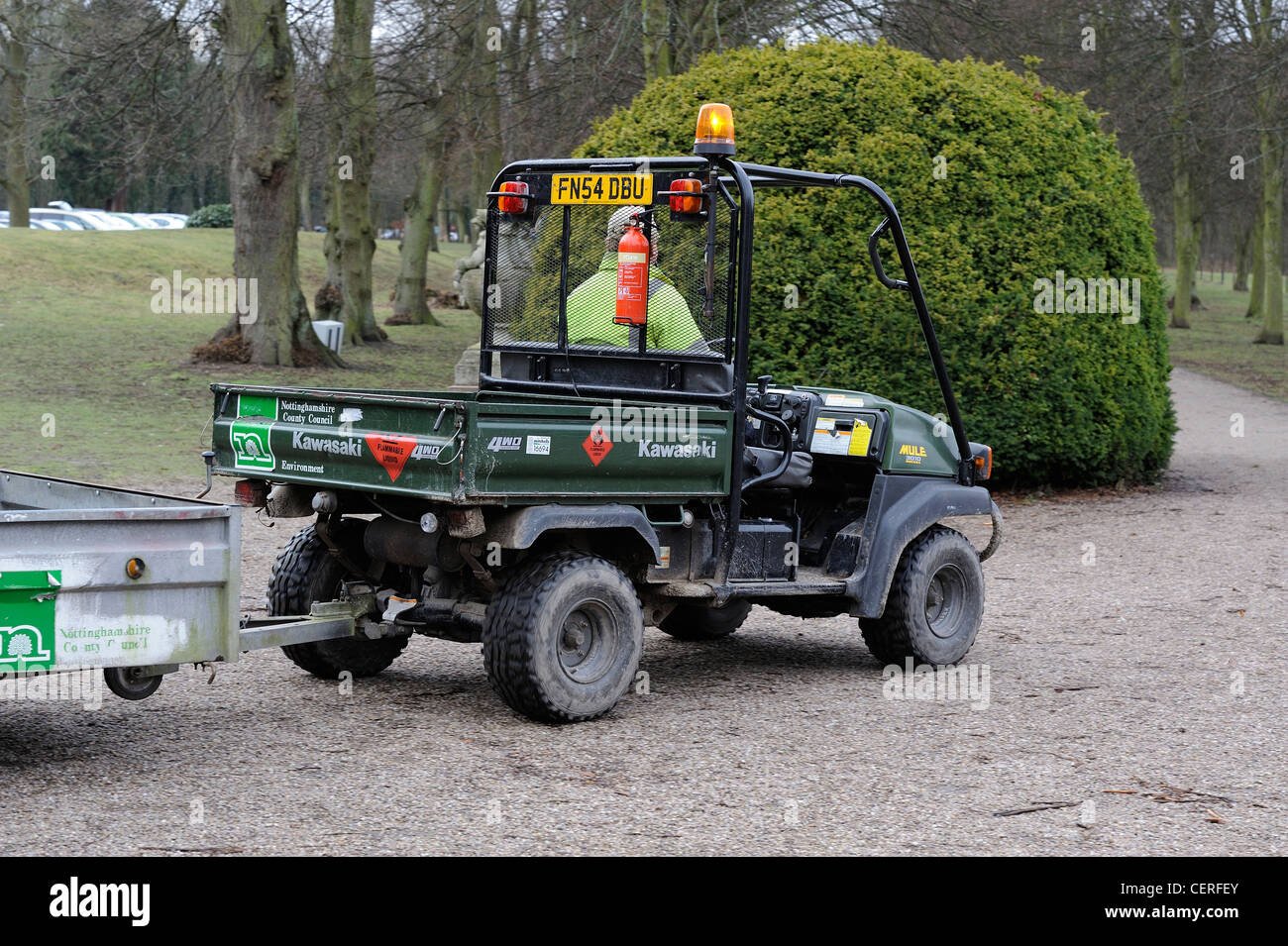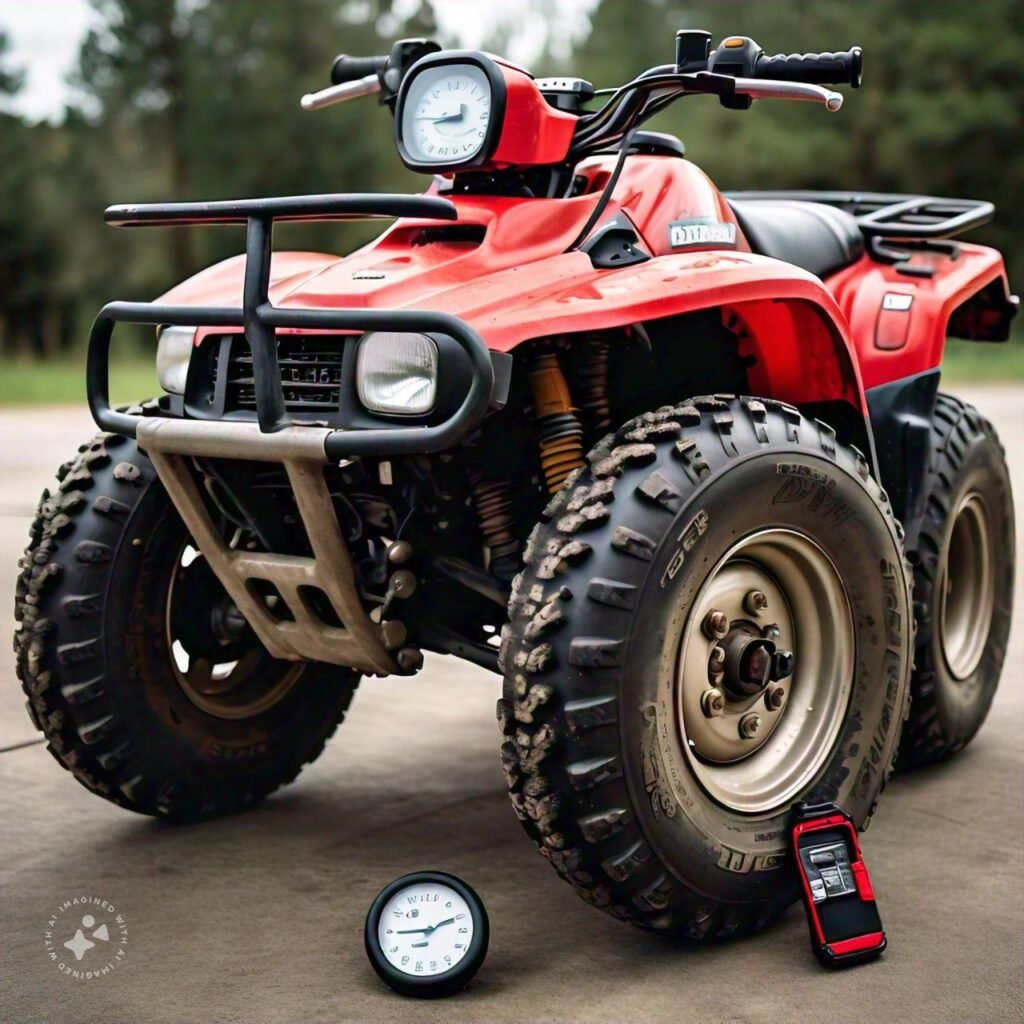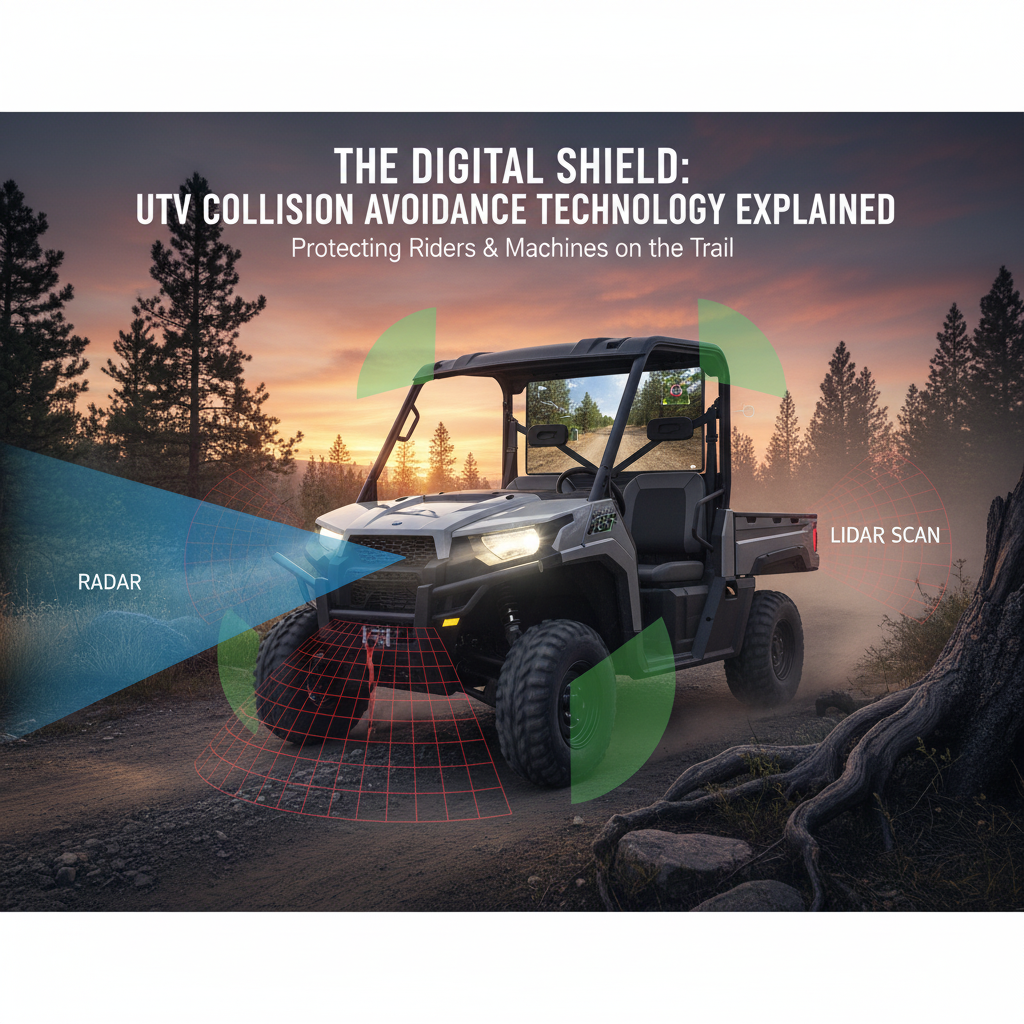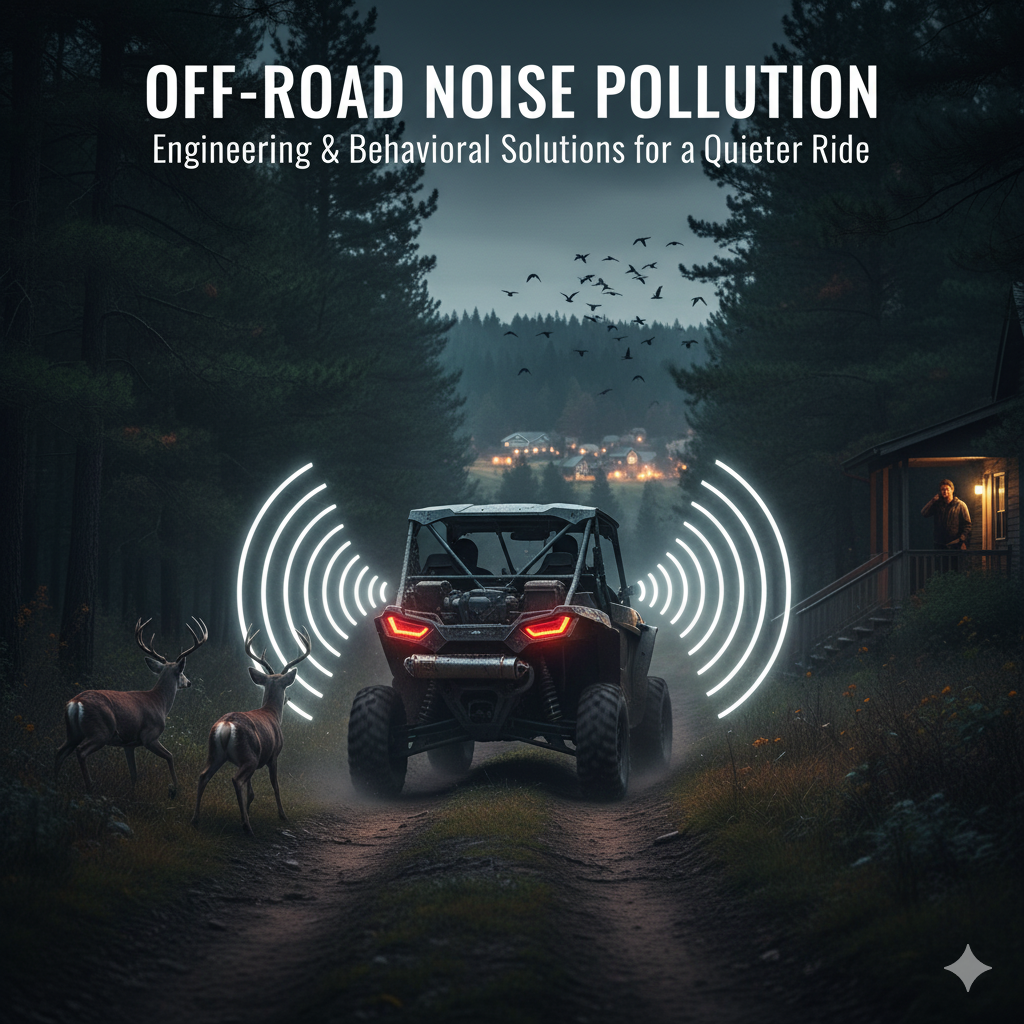Utility vehicles (UTVs), also known as side-by-sides, have seen a significant surge in popularity owing to their versatility and robustness – Kawasaki Mule vs Honda Pioneer vs Polaris Ranger.
These vehicles are design to handle a variety of terrains and tasks.
Making them indispensable in numerous industries such as agriculture, construction, and outdoor recreation.
UTVs are characteriz by their larger cargo areas, multiple seating capacities, and ability to traverse rugged landscapes.
which sets them apart from traditional off-road vehicles like ATVs and standard automobiles.
In agriculture, UTVs are often utilize for transporting equipment, feed, and supplies across expansive farmlands.
Their capacity to tow and carry heavy loads efficiently makes them a vital asset for farmers.
In the construction industry, UTVs provide a reliable means of moving materials and personnel across job sites.
Especially in areas where larger vehicles may struggle to navigate.
For recreational purposes, UTVs offer thrill-seekers an adventurous ride through forests, deserts, and mountainous regions, providing both excitement and utility.
The growing preference for UTVs over other types of vehicles can be attribute to their durability, adaptability, and ease of use.
They combine the ruggedness require for challenging tasks with the comfort and safety features desired for everyday use.
This adaptability makes UTVs a favored choice for both work and play, appealing to a broad range of users from different sectors.
Understanding the diverse applications and advantages of UTVs sets the stage for a detail comparison of three leading models in the market:
the Kawasaki Mule, Honda Pioneer, and Polaris Ranger.
Each of these models boasts unique features and capabilities, catering to various needs and preferences.
Through a comprehensive analysis, we will explore how these utility vehicles stack up against each other in terms of performance, reliability, and overall value.
Kawasaki Mule: Features and Performance
The Kawasaki Mule series has long been a staple in the utility vehicle (UTV) market, renown for its robust build and dependable performance.
The key features of the Kawasaki Mule are design to cater to a variety of needs, from agricultural work to recreational use.
One of the standout aspects of the Kawasaki Mule is its diverse range of models.

Which includes the Mule Pro, Mule SX, and Mule 4000 Trans series, each tailored to specific requirements.
In terms of engine options, the Kawasaki Mule offers a variety of choices to suit different performance needs.
The Mule Pro series, for instance, is equipped with a powerful 812cc three-cylinder engine that delivers impressive torque and horsepower, ensuring reliable performance even under heavy loads.
The Mule SX, on the other hand, features a more compact 401cc single-cylinder engine, making it an excellent choice for lighter tasks and more confined spaces.
Payload capacity is another critical factor where the Kawasaki Mule excels.
The Mule Pro series boasts a substantial payload capacity of up to 1,000 pounds, making it ideal for carrying heavy equipment and supplies.
Additionally, the towing capabilities are commendable, with some models capable of towing up to 2,000 pounds, ensuring that the Mule can handle a wide range of utility tasks with ease.
Unique technologies and design elements further enhance the appeal of the Kawasaki Mule.
Features such as the electronic power steering (EPS) system provide enhanced maneuverability and control, particularly in rough terrain.
The innovative Trans Cab system found in the Mule Pro series allows for quick and easy configuration changes.
Enabling users to switch between two-passenger and four-passenger seating configurations without the need for tools.
Overall, the Kawasaki Mule stands out in the UTV market due to its versatile range of models.
Robust engine options, substantial payload and towing capacities, and unique features that enhance both functionality and user convenience.
Whether for work or play, the Kawasaki Mule offers a reliable and efficient solution for a wide array of utility needs.
Honda Pioneer: Features and
Performance
The Honda Pioneer series is renown for its versatility, reliability, and performance, making it a favored choice among utility vehicle (UTV) enthusiasts.
The lineup includes various models such as the Pioneer 500, Pioneer 700, and Pioneer 1000, each designed to cater to different needs and preferences.
The Pioneer 500 is an excellent entry-level model, featuring a compact design that allows it to navigate narrow trails and tight spaces with ease.
It is powered by a 475cc engine, providing ample power for light-duty tasks and recreational activities.
The Pioneer 700 steps up in terms of power and capability, equip with a 675cc engine and offering options for two or four passengers.
This model is ideal for those who need a balance of performance and practicality.
For those requiring maximum power and utility, the Pioneer 1000 is the flagship model.
It boasts a robust 999cc engine, delivering impressive torque and horsepower for heavy-duty tasks.
The Pioneer 1000 also features Honda’s industry-leading Dual Clutch Transmission (DCT), which provides smooth and responsive gear changes, enhancing both performance and fuel efficiency.
In terms of payload and towing capacities, the Pioneer series does not disappoint.
The Pioneer 700 can handle up to 1,000 pounds of payload and tow up to 1,500 pounds.
While the Pioneer 1000 can manage up to 1,000 pounds in its cargo bed and tow up to 2,000 pounds.
These capacities make the Pioneer models highly capable for work on farms, construction sites, or any demanding environment.
Innovative technologies and design highlights also contribute to the Honda Pioneer’s reputation.
The Pioneer 1000 features the i-4WD system, an intelligent four-wheel-drive system that enhances traction and control on challenging terrains.
Additionally, Honda’s QuickFlip seating allows for easy configuration of the rear seats to accommodate passengers or cargo as need.
Overall, the Honda Pioneer series offers a range of models that combine power, versatility, and innovative features, making it a strong contender in the UTV market.
Whether for work or recreation, the Honda Pioneer delivers reliable performance to meet various demands.
Polaris Ranger: Features and Performance
The Polaris Ranger series holds a prominent position in the utility vehicle market, known for its robust performance and versatile features.
Design to cater to diverse user needs, the Polaris Ranger offers several models, each tailored to specific demands.
Notable among these are the Ranger XP 1000, Ranger 570, and Ranger EV, each bringing unique capabilities to the table.
One of the standout features of the Polaris Ranger is its engine variety.
The Ranger XP 1000, for instance, is equip with a 999cc ProStar engine, delivering impressive power and torque, making it suitable for heavy-duty tasks.
Alternatively, the Ranger 570 features a 567cc ProStar engine, balancing power and efficiency for moderate utility needs.
For those seeking an eco-friendly option, the Ranger EV offers an electric engine, combining silent operation with zero emissions.
Payload capacity is another area where the Polaris Ranger excels.
The Ranger XP 1000 boasts a notable payload capacity of up to 1,500 pounds, ensuring it can handle substantial loads with ease.
The Ranger 570, while more compact, still offers a respectable 1,000-pound payload capacity.
Towing capabilities are equally impressive, with the XP 1000 capable of towing up to 2,500 pounds, making it a reliable choice for hauling equipment or trailers.
The Polaris Ranger series also integrates advanced technologies to enhance user experience.
Features such as the Polaris Ride Command system provide GPS navigation, vehicle diagnostics, and connectivity, ensuring users are well-informe and connect during their operations.

Moreover, the Ranger’s design is tailor for durability and comfort, with adjustable seats, ample cargo space, and reinforce chassis contributing to its long-lasting performance.
What truly sets the Polaris Ranger apart from its competitors is its blend of power, versatility, and innovation.
With a range of models to choose from, each equipped with powerful engines.
Substantial payload and towing capacities, and cutting-edge technology, the Polaris Ranger series stands as a leading choice in the utility vehicle segment.
Whether for work or recreation, the Polaris Ranger delivers on all fronts, making it a formidable contender in the UTV market.
Comparative Analysis: Engine and Powertrain
When evaluating utility vehicles, the engine and powertrain configurations play a pivotal role in determining overall performance and suitability.
The Kawasaki Mule, Honda Pioneer, and Polaris Ranger each offer distinct powertrain options that cater to various needs and preferences.
The Kawasaki Mule is equip with a robust engine that prioritizes reliability and durability.
It features a 617cc V-twin engine, known for its smooth power delivery and low-end torque.
This makes the Mule particularly adept at handling heavy loads and rugged terrain.
Fuel efficiency is a notable strength, as the Mule is designed to operate efficiently over long distances, minimizing fuel consumption.
Maintenance is straightforward, with easy access to engine components, making routine servicing less cumbersome.
In contrast, the Honda Pioneer boasts a 999cc twin-cylinder engine that emphasizes both power and efficiency.
The Pioneer’s engine is engineered for high performance, offering impressive acceleration and a top speed that surpasses many competitors.
Its fuel efficiency is commendable, attributed to Honda’s advanced fuel injection system, which optimizes fuel usage.
Durability is another highlight, with Honda’s reputation for building long-lasting engines.
he Pioneer’s powertrain also features a sophisticated transmission system that enhances its versatility.
Making it suitable for a wide range of tasks from recreational use to heavy-duty work.
The Polaris Ranger stands out with its 999cc ProStar engine, renown for its power and responsiveness.
The Ranger’s engine delivers robust performance, making it ideal for demanding tasks such as towing and hauling.
Its fuel efficiency is competitive, thanks to an efficient power management system that balances power output and fuel consumption.
Durability is a strong point, with the engine design to withstand harsh conditions and heavy usage.
Maintenance is user-friendly, with accessible components that simplify routine checks and repairs.
Overall, each vehicle offers unique strengths in terms of engine and powertrain.
The Kawasaki Mule excels in reliability and efficiency, making it a solid choice for consistent, heavy-duty work.
The Honda Pioneer’s high performance and versatility cater to users needing a powerful yet efficient vehicle.
Meanwhile, the Polaris Ranger’s balance of power and durability makes it suitable for the most demanding tasks.
The best choice ultimately depends on the specific needs and priorities of the user.
Comparative Analysis: Comfort and Usability
When evaluating utility vehicles for comfort and usability, the Kawasaki Mule, Honda Pioneer, and Polaris Ranger each showcase unique strengths and features that cater to different needs and preferences.
Comfort and usability are critical factors, especially for those who spend long hours either working or engaging in recreational activities.
The Kawasaki Mule emphasizes a spacious and ergonomic design, accommodating up to six passengers with its Trans Cab system.
This flexible seating arrangement allows for quick adjustments between cargo and passenger space, enhancing usability.
The seats are padded and contoured, providing adequate support for extended periods.
The cabin space is generous, ensuring a comfortable ride even on rough terrains.
Ease of access is facilitated by wide-opening doors and a low step-in height, making entry and exit straightforward.
User-friendly controls are strategically placed, ensuring that even beginners can operate the vehicle with ease.
On the other hand, the Honda Pioneer focuses on a balance between ruggedness and comfort.
Its seating configuration is versatile, with the ability to switch between two, three, or five seats depending on the model.
The seats are designed with durable materials that offer both comfort and longevity.
The cabin is well-ventilated, providing a pleasant environment during long hours of use.
Ergonomically place controls and a tilt steering wheel enhance driving comfort, while the low noise level within the cabin contributes to an overall pleasant experience.
The ease of access is optimized with large doors and a low step-in height.
The Polaris Ranger stands out with its premium comfort features.
It offers plush, adjustable seating with ample legroom, making it ideal for extended use.
The cabin boasts an impressive fit and finish, often compared to passenger vehicles in terms of comfort.
Ergonomic controls are complemented by advanced technological features, such as a digital display and intuitive dashboard.
The ease of access is further enhanced by wide doors and a thoughtful step-in design.
Additionally, the Polaris Ranger includes unique features like climate control options, which significantly improve usability during extreme weather conditions.
In essence, while each utility vehicle—Kawasaki Mule, Honda Pioneer, and Polaris Ranger—has its distinct advantages in comfort and usability.
the choice ultimately depends on individual needs and preferences.
Whether prioritizing spacious cabins, ergonomic designs, or advanced comfort features, each vehicle offers a compelling option for diverse applications.
Comparative Analysis: Durability and Reliability
When evaluating utility vehicles, durability and reliability are paramount.
The Kawasaki Mule, Honda Pioneer, and Polaris Ranger each have distinct features that contribute to their overall robustness.
Assessing these attributes involves examining build quality, materials used, long-term performance, and user feedback.
The Kawasaki Mule is renowned for its rugged construction, utilizing high-strength steel and corrosion-resistant materials to withstand harsh environments.
Long-term users often praise its ability to endure heavy use, with fewer reported issues related to structural integrity.
However, some users have noted occasional electrical problems, which, while not pervasive, are worth considering.
Kawasaki offers a standard three-year warranty, which is relatively generous and reflects the company’s confidence in the Mule’s durability.
Honda’s reputation for reliability extends to the Pioneer series.
Known for its solid build and use of high-quality components.
the Honda Pioneer consistently receives high marks for long-term performance.
User reviews frequently highlight the vehicle’s dependable engine and low maintenance needs.
Common concerns are minimal, though some riders have report minor transmission issues.
Honda supports its vehicles with a comprehensive one-year warranty, supplemente by an extensive network of service centers, ensuring accessible and reliable customer support.
The Polaris Ranger, a favorite among utility vehicle enthusiasts, boasts a robust design with extensive use of reinforced materials.
Its durability is underscored by positive long-term performance reviews and a low incidence of significant issues.
Some users have mention drivetrain problems, but these are relatively rare.
Polaris provides a standard one-year warranty, with options for extended coverage, and is known for its responsive customer support team, which enhances the vehicle’s appeal.
In conclusion, while all three vehicles exhibit strong durability and reliability, the Kawasaki Mule’s superior warranty and minimal long-term issues may edge it ahead.
Nevertheless, the Honda Pioneer and Polaris Ranger also offer dependable performance, each with its own strengths and minor drawbacks. Ultimately, the best choice depends on specific user needs and preferences.
Conclusion: Which Utility Vehicle is Right for You?
After delving into the comparative analysis of the Kawasaki Mule, Honda Pioneer, and Polaris Ranger.
It is clear that each utility vehicle has distinct strengths and potential drawbacks, catering to varied user needs and preferences.
The Kawasaki Mule stands out for its robust build and versatile functionality, making it an excellent choice for heavy-duty tasks and rigorous work environments.
Its durability and reliability are particularly beneficial for users who require a dependable utility vehicle for demanding job sites.
On the other hand, the Honda Pioneer shines with its balance of performance and comfort.
This vehicle is tailored for those who not only need a functional utility vehicle but also value a smooth and comfortable ride.
Its innovative features and user-friendly design make it suitable for both work and recreation, appealing to users who seek versatility in their utility vehicle without compromising on comfort.
Meanwhile, the Polaris Ranger offers exceptional power and advanced technology, making it a top contender for users who prioritize cutting-edge features and high performance.
Its capability to handle tough terrains and challenging conditions with ease is particularly appealing to enthusiasts who enjoy off-road adventures and require a vehicle that can keep up with their dynamic lifestyle.
When it comes to budget constraints, the Kawasaki Mule often presents a more cost-effective option compared to the other two, without sacrificing essential functionalities.
However, if budget is less of a concern and advanced features and comfort are priorities, the Honda Pioneer and Polaris Ranger offer considerable value for their higher price points.
Ultimately, the choice between the Kawasaki Mule, Honda Pioneer, and Polaris Ranger depends on your specific requirements and preferences.
If your primary focus is on rugged durability and cost-efficiency, the Kawasaki Mule may be the ideal choice.
For a balance experience of performance and comfort, the Honda Pioneer is a compelling option.
For those who seek top-tier performance and advanced technology, the Polaris Ranger stands out as a premier utility vehicle.
Assess your individual needs and preferences to make the most informed decision for your utility vehicle purchase.




